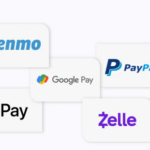Copay Bitcoin Wallet is an Hierarchical Deterministic wallet. This means that funds in the wallet can be restored using old backups, diminishing the risks of losing funds. The extra security of using different addresses for each bitcoin transaction is also a positive security feature alongside multi signature capabilities. Copay Bitcoin Wallet allows users to check prices in over 150 currencies. Copay Bitcoin Wallet is open-source free software, it is not bound to companies or individuals. Anyone can copy, modify, verify or contribute to Copay.
- About Copay Bitcoin Wallet
- Copay Bitcoin Wallet Key Details
- How To Install Copay Bitcoin Wallet?
- Copay Bitcoin Wallet Step 1
- Copay Bitcoin Wallet Step 2
- Copay Bitcoin Wallet Step 3
- Copay Bitcoin Wallet Step 4
- Copay Bitcoin Wallet Step 5
- Copay Bitcoin Wallet Features
- Copay Bitcoin WalletTesting on Real Devices
- Android
- iOS
- Copay Bitcoin Wallet Build Copay App Bundles
- Copay Bitcoin Wallet Backups and Recovery
- Copay Bitcoin Wallet Service
- Translations
- Support requests
- License
- Copay Bitcoin Wallet Fees
- Copay Wallet Price
- Copay Wallet Ease of Use
- Security
- How To Secure Your Copay Bitcoin Wallet?
Copay Bitcoin Wallet is a secure bitcoin wallet platform for both desktop and mobile devices. Copay Bitcoin Wallet uses Service (BWS) for peer synchronization and network interfacing.Binary versions of Copay are available for download at Copay.io. Copay Binaries are signed with the key copay@bitcoin.com – See the section How to Verify Copay Bitcoin Wallet Signatures for details.This project was created by Bit Pay Inc, and it is maintained by Bitcoin and hundreds of contributors. There is a Copy Bitcoin Wallet branded version of Copay at mobile phone stores, Bitcoin Wallet, which features integration with the Bitcoin Visa Debit Card, as its main difference.
About Copay Bitcoin Wallet
The Copay Bitcoin wallet was launched in 2015 by a company called BitPay. BitPay was the first Bitcoin payment provider and allowed many businesses to accept Bitcoin as payment for the first time. It’s like a crypto version of Visa or Mastercard! The service was launched in May 2011 and it was being used by 10,000 different businesses by September 2013.The Copay Bitcoin wallet was released in June 2015. By 2016, BitPay was processing 200,000 Bitcoin transactions each month and Copay was becoming one of the world’s most-used crypto wallets.
Copay Bitcoin Wallet implements a multisig wallet using p2sh addresses. It supports multiple wallets, each with its own configuration, such as 3-of-5 (3 required signatures from 5 participant peers) or 2-of-3. To create a multisig wallet shared between multiple participants, Copay requires the extended public keys of all the wallet participants. Those public keys are then incorporated into the wallet configuration and combined to generate a payment address where funds can be sent into the wallet. Conversely, each participant manages their own private key and that private key is never transmitted anywhere.
Copay Bitcoin Wallet Key Details
| Key | Details |
|---|---|
| Vendor Name | Copay Bitcoin Wallet |
| Supported Currency | BTC |
| Wallet Features | Hierarchical Deterministic, Open Source, Multi-Signature |
| Platforms | (Android), (iOS), (Window Phone), (Windows), (Mac OS), (Lunix), (Chrome Extension), |
| Validation Type | SPV |
| Ease of Use | Easy |
| Anonymity | Medium |
| Support | 24/7 |
| Listed At Altwow | 07/08/2020 |
| Official Wallet Website | Click Here To Visit Wallet Website |
How To Install Copay Bitcoin Wallet?
Copay Bitcoin Wallet Features
- Bitcoin and Bitcoin Cash coin support
- Multiple wallet creation and management in-app
- Intuitive, multisignature security for personal or shared wallets
- Easy spending proposal flow for shared wallets and group payments
- BIP32 Hierarchical deterministic (HD) address generation and wallet backups
- Device-based security: all private keys are stored locally, not in the cloud
- Support for Bitcoin testnet wallets
- Synchronous access across all major mobile and desktop platforms
- Payment protocol (BIP70-BIP73) support: easily-identifiable payment requests and verifiable, secure bitcoin payments
- Support for over 150 currency pricing options and unit denomination in BTC or bits
- Mnemonic (BIP39) support for wallet backups
Copay Bitcoin WalletTesting on Real Devices
It’s recommended that all final testing be done on a real device – both to assess performance and to enable features that are unavailable to the emulator (e.g. a device camera).
Android
Follow the Cordova Android Platform Guide to set up your development environment.
When your development environment is ready, run the start:android package script.
npm run apply:copay
npm run prepare:copay
npm run start:android
iOS
Follow the Cordova iOS Platform Guide to set up your development environment.
When your development environment is ready, run the start:ios package script.
npm run apply:copay
npm run prepare:copay
npm run start:ios
Copay Bitcoin Wallet Build Copay App Bundles
Before building the release version for a platform, run the clean-all command to delete any untracked files in your current working directory. (Be sure to stash any uncommitted changes you’ve made.) This guarantees consistency across builds for the current state of this repository.The final commands build the production version of the app, and bundle it with the release version of the platform being built.
Copay Bitcoin Wallet Backups and Recovery
Since v1.2 Copay uses BIP39 mnemonics for backing up wallets. The BIP44 standard is used for wallet address derivation. Multisig wallets use P2SH addresses, while non-multisig wallets use P2PKH.
Information about backup and recovery procedures is available at: https://github.com/bitpay/copay/blob/master/backupRecovery.md
Previous versions of Copay used files as backups. See the following section.
Copay Bitcoin Wallet Service
It is possible to recover funds from a Copay Wallet without using Copay or the Wallet Service, check the Copay Recovery Toolllet Service (BWS) for blockchain information, networking and Copayer synchronization. A BWS instance can be setup and operational within minutes or you can use a public instance like https://bws.bitpay.com. Switching between BWS instances is very simple and can be done with a click from within Copay. BWS also allows Copay to interoperate with other wallets like Bitcore Wallet CLI.Please note that Copay v5.3.0 and above use CSP to restrict network access. To use a custom BWS see CSP announcement.
Translations
Copay uses standard gettext PO files for translations and Crowdin as the front-end tool for translators. To join our team of translators, please create an account at Crowdin and translate the Copay documentation and application text into your native language.
Support requests
If you are having particular problem with your Copay instalation, please first search older issues in order to learn if the issue is already reported. It could be fixed already.Please also check our FAQ.When requesting support describe the issue as much in detail as possible. Consider to provide the following information:
- Which platform are you using? (Which device and operating system)
- Which version of Copay are you using? (Check Copay version on the side menu)
- Please import your wallet on a different platform. Does the problem persist?
License
Copay is released under the MIT License. Please refer to the License file that accompanies this project for more information including complete terms and conditions.
Copay Bitcoin Wallet Fees
To use the wallet you have to pay network transaction fees. Network fees are based on the volume of the transaction at a particular time. Using Copay, you can determine your transaction fees by selecting either Super Economy or Urgently. However, note that the higher your fees, the faster the transaction. “Super Economy” is for slower transactions, while “urgently” guarantees fast transactions.
Copay Wallet Price
The wallet is free. Copay supports various desktop platforms including Linux, MAC OS X and Microsoft Windows. It is also available for Android and iOS mobile devices. Download the latest releases on GitHub.
Copay Wallet Ease of Use
Apart from its versatility, Copay is quite intuitive although beginners might find it a bit hard to use. It has features for customizing wallet names and colorful background themes. The wallet supports several languages including French, Chinese, Spanish and German. All these were put in place to enable a seamless UX with the wallet.
Security
BitPay recorded a phishing attack in the past. The pursuit of protection against these hacks led to the invention of the Copay wallet. It uses HD wallet settings. This implies that it generates addresses per transaction and uses a seed phrase backup feature. You can always recover your wallet when you lose your main login device. The wallet uses a SPV method with the aid of BitPay server as the third party instead of a full blockchain node. Although Copay executes this securely, most BTC users consider this SPV method a con.
How To Secure Your Copay Bitcoin Wallet?
There Are A Number Of Ways To Keep The “Bad Guys” Away From Copay Bitcoin Wallet . And Although Cryptocurrency, As A Technology, Has Increased Anonymity And Encryption, The Devices On Which These Funds Are Stored (Phone, Pc, Tablet) Are Much More Susceptible To Hacking. Below Are A Number Of Simple Tips That Can Improve The Security Of Your “Crypto Wallet”.
Step 1 : Store Your Token Pocket Wallet Private Keys Offline: Print Them Out On Paper
The “Hunt” For Your Data Does Not Stop For A Minute, Regardless Of What Gadget You Use, Or What Network You Are Connected To. A Good Idea To Solve Some Of The Problems Associated With The Possibility Of Theft Of Personal Data Is Printed On Paper Keys For The Wallet — A Variant Of Replacing The Software “Assistant”. In This Case, You Will Only Need Paper And A Printer — No Additional Devices Or Gadgets. The Output Will Be A Kind Of Offline Wallet, Represented By A Pair Of Printed Keys. Some Enthusiasts Refer To This Approach As “Cold Wallets”, Because In The End, The Storage Process Takes Place Offline.Paper Wallets Are In Regular Demand, And You Can Test Their Functionality Yourself:
The Main Difference: The Creation Of Unique Addresses And Keys Through The Use Of Client-side Js Scripts. In Other Words, Keys Are Created Immediately On Your Pc, Without Requiring Data Transfer Over The Internet. And To Make This Process More Fun, The Developers Suggest That You Move The Mouse And Fill In Text Fields, Thus Obtaining Unique Data For Generating The Necessary Tools.
Step 2 : Setup Second Step Verification
Two-factor Authentication Requires The User To Enter An Additional Code From Another Source – Such As A Text Message Or Email. However, The Most Common Method Is Through The Google Authenticator App. Just Install It On Your Phone And It Will Generate A New 6-digit Access Code To Log In To Your Copay Bitcoin Wallet Or Make Transfers.
We Recommend Using Only Those Web Wallets That Do Not Support Two-factor Verification. In Particular, The Wasabi Wallet Offers To Activate 2fa Already At The Registration Stage.
Step 3 : Create A Strong Password For Your Copay Bitcoin Wallet
If You Decide To Use A Web Copay Bitcoin Wallet, Which Is Recommended Only For Small Transactions, Alway Make Sure That Your Password Is Secure. Never Enter Your Date Of Birth Or Credit Card Pin As Your Password. Use Alphanumeric Combinations, Combine Cases, Use Underscores, And So On. But It’s Best To Use An Strong Online Password Maker Website.
Step 4 : Learn To Recognize Phishing Sites
Phishing Sites And Apps Mimic The Design Of Popular Crypto Wallets In The Smallest Detail — Only The Page Address Is Slightly Different. Before Entering Your Private Key Or Secret Phrase In Your Wallet, Make Sure That The Page Address Is Correct.
The Chrome Store Library Is Known For Its Abundance Of Phishing Extensions, Especially For Cold Wallets Like Ledger. Although Google Removes Dozens Of Such Fraudulent Products Every Month, New Ones Are Coming In Their Place. In March 2020, Fraudsters Stole More Than $ 250,000 In Ripple Coins From Their Wallets Using A Fake Extension, And In June 2020, Crypto Podcast Host Eric Savix Lost All Of His 12 Bitcoins By Entering A Secret Phrase In A Phishing Extension For Ledger.
Step 5 : Don’t Click On Links In Emails
Phishers Often Send Emails From An Address That Is Almost Identical To The Real Address Of The Wallet Support Service. For Example, If You Use A XYZ Wallet From xyz.cxom Then You May Receive An Email From A Fake Address Like Support@xy-z.com Instead Of The Present Support@xyz.com. These Emails Try To Scare The User Or Create The Illusion Of Urgency — For Example, You Will Be Informed That Your Account Has Been Hacked/Blocked And That You Need To Update Your Security, Change Your Password, And So On. The Link Leads To A Fraudulent Page That Will Either Steal Any Data You Enter Or Install A Virus On Your Device.
This Also Applies To Ads Above Google Search Results That Often Advertise Phishing Pages. Here Is An Example – Note The Difference In Just One Letter Between A Real Address And A Fraudulent One:
Step 6 : Install Or Use Trusted Antivirus
The First Thing You Should Do After Installing A Copay Bitcoin WalletIs Install A Reliable Antivirus And Update It. Most Cyber Attacks Attempt To Send Important Information From Your Computer, You Should Make Sure That Your Pc Or Mobile Is Protected From A Virus Threat. Regularly Update Your Antivirus To Minimize The Risks Associated With The Appearance Of New Virus Threats That The Old Version Did Not Protect Against.
Step 7 : Never Disclose Your Private Keys
Private Keys Are Intended Exclusively For You. You Should Not Disclose Them For Transactions Or Cryptocurrency Purchases
Final Thought
We Hope You Like Our Copay Bitcoin Wallet Review . If You Like Than Please Comment Your Thought Below . Also Subscribe Our Newsletter For More Interesting Copay Bitcoin Wallet Reviews . Thanks For Visit At Altwow .








